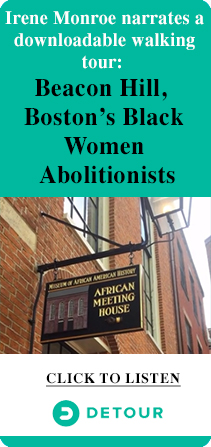As Kwanzaa is a black holiday, and St. Patrick’s Day is an Irish holiday, Halloween should officially be acknowledged as a gay holiday.
Long before June officially became Gay Pride Month, and October “Coming Out Month” for the LGBTQ community, Halloween was unofficially our yearly celebrated “holiday,” dating as far back at the 1970’s when it was a massive annual street party in San Francisco’s Castro district.
Today it’s an LGBTQ extravaganza that rivals—if not out-showcases —Pride festivals.
By the 1980’s, gay enclaves like Key West, West Hollywood, and Greenwich Village were holding their annual Halloween street parties. And the parades the night of Halloween were and still are lavish costumed theatricality drawing straight and LGBTQ spectators out to watch.
Gay cultural influence on Halloween has become such an unstoppable phenomenon here and abroad that anthropologist Jerry Kugelmass of University of Florida published a book in 1994 on the new trend titled, “Masked Culture,” depicting Halloween as an emerging gay “high holiday.”
“The ’masked culture’ first developed by the gays of San Francisco has reached across the lines of orientation—and now jumped across the boundaries between nations and languages. It’s not just a party. It’s an ideal of personal emancipation, self-expression and self-fulfillment—an ideal that loses none of its power when it takes the form of a sexy nurse’s outfit,” CNN contributor David Frum wrote in 2010 in “Halloween craze started in gay culture.”
Nicholas Rogers, author of “Halloween: From Pagan Ritual to Party Night,” points out that while Halloween is enjoyed by everyone, “it has been the Gay community that has most flamboyantly exploited Halloween’s potential as a transgressive festival, as one that operates outside or on the margins of orthodox time, space, and hierarchy. Indeed, it is the Gay community that has been arguably most responsible for Halloween’s adult rejuvenation.”
Halloween allows many LGBTQ Americans at least one night annually, Oct. 31, of safely being out and “unmasked” while remaining closeted. The community revels the entire night like there is no tomorrow, and for many there isn’t. Like its pagan roots, Halloween provided an outlet for us cross-dressing and gender-bending LGBTQ outsiders who are ostracized by mainstream society.
As Halloween flourishes as a gay cultural phenomenon, so, too, flourished a backlash by the fundamentalist Christians with their “Hell Houses.”
And these Christians relentlessly target our children.
“Hell Houses” are today’s contemporary form of both anti-gay bullying and witch-hunting. Created in the late 1970’s by deceased fundamentalist pastor, the Reverend Jerry Falwell, “Hell Houses” are religious alternatives to traditional haunted houses.
They are tours—a hayride through hell, a demon-guided stroll in a cemetery, or a train trip of terror-given by evangelical churches across the country design to scare and bully people away from sin. And one of those sins is homosexuality.
Sadly they are still up and running in 2013. And today you can purchase (at a nominal fee for saving souls) a Hell House Outreach Kit as a church ministry.
“The method is timely! The message is timeless! Desperate times call for drastic measures! If your church or ministry is determined to take a stand against sin and the kingdom of darkness and to reach people for Jesus like never before, then this outreach is for you!,” Senior pastor Keenan Roberts of New Destiny Christian Center in Thornton, Colorado advertises them. Keenan’s the author and creator of the how-to Hell House Outreach Kit.
Religious leaders who support Hell Houses believed that by scaring LGBTQ youth into “heterosexual” behavior they are saving their souls.
However, the message that “homosexuals” are going to hell can have a deleterious impact on all youth- those who are LGBTQ and those who engage in anti-gay bullying.
Residing just a stone’s throw from Salem, Massachusetts, as the nation gears up for Halloween, I am reminded of one of this nation’s earliest Hell Houses- the Salem Witch Trials of 1692.
This haunting history of the Puritan’s execution of innocent women, and certain men too, is a window into how their bullying of religious fanaticism, misogyny, and homophobia destroyed not only the moral fiber of their town, but how it also decimated its own Christian zeal to become a “city on the hill.”
Homosocial circles of women threatened the Puritan’s paradigm of male dominance, giving rise to the charges of witchcraft, because of the theological belief that women ought not be in the company of each other without the presence of a man. And without the presence of a man, of course, women could not help but engage in sorcery, paganism, and lesbianism.
A study published in the Journal of Psychology stated that a strong belief in Satan is directly related to intolerance of LGBTQ people.
But with Halloween flourishing as a gay cultural phenomenon our children, too, can now joyfully go door-to-door trick-or-treating.
Our influence on culture is being acknowledged and celebrated more as we come out.
Happy Halloween!



